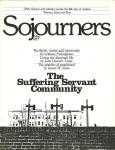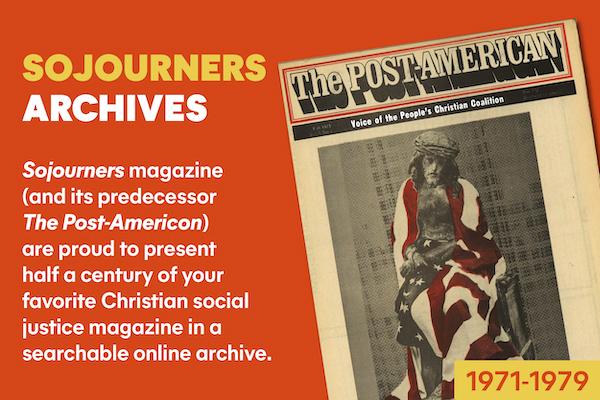There are several types of movies which deal with the period of history that Union Maids deals with--the period of the great battles to organize labor unions. Julia Reicherr, who made the 1971 documentary Growing Up Female, has given us a needed “oral history” by women key to the events of the thirties.
Big budget movies are not vehicles for teaching radical social history. Witness two such movies, both of which deal with great songwriters: Joe Hill (the International Workers of the World organizer and songwriter), and Bound for Glory , about Woody Guthrie. Each movie glamorizes its main character, and relies on stereotype and excessive romance to portray the mood and historical experiences of his time. The history is secondary to the attempts at biography. Unfortunately, many will view such movies and form misconceptions about those historical times, and the movements that were prominent in them. You can’t organize by walking into a field and getting the workers to join you in a song.
There are many “heroes” in the labor movement: people who through their articulateness, visibility, courage, or martyrdom were able to capture the public imagination and become spokespeople for an idea. Names like Mother Jones, Sacco and Vanzetti, Big Bill Haywood, Joe Hill, and Eugene Debs might no be household words, but their exploits are the folklore of labor organizers.
History, though, is not written by heroes alone, those who stand out in our consciousness. Those folk heroes came out of a movement peopled by ordinary men and women who possessed dignity, courage and a capacity to organize workers to change an unjust situation. Those ordinary, unnamed, and unknown people are the ones who made history, and who continue to make it. They are called, in biblical language, the salt of the earth.
Union Maids, a 55-minute black and white documentary, is a simple and powerful movie. It is in the tradition of such works as Salt of the Earth (the story of a copper mine strike by Mexican-American workers, played by many of the people who took part in the actual strike), and the more recently released Harlan County, U.S.A., by Barbara Kopple.
Taped interviews with three women who were Congress of Industrial Organizations (CIO) organizers in Chicago during the thirties is intercut with each other and with newsreel footage--the movie is an excellent example of the strength of filmed oral history. In the early stages of union organizing in the country, the American Federation of Labor and the CIO were separate federations of unions. The CIO was the more radical, willing to “organize the unorganized.”
The women who tell their stories are Sylvia Woods, a black women from New Orleans who was a laundry worker; Kate Hyndman, who worked in a factory; and Stella Nowicki, who was raised in a small, poor, farming community in Michigan and worked in the stockyards.
Stella and Sylvia were interviewed in Rank and File by Alice and Staughton Lynd, an effort to record the oral history of the early days of the labor movement. It was from that book that the inspiration for the movie came.
The newsreel footage itself is powerful. These were pre-New Deal days, robber baron days--no unemployment compensation; no compensation for injuries suffered from machines that had no safety mechanisms; no food stamps; no rights for workers; 10 hour, 7 day weeks--these were the days of the depression. Among the films are demonstrations in Chicago for right to food for unemployed people, demonstrations that stretched for miles. For unemployment was rampant, and people were angry. The police were protectors of property and the right to profit: many scenes show brutal violence used to break up demonstrations, and to stop picket lines from gathering.
Pete Seeger and the Almanac Singers sing the classic labor songs: “Union Maid,” “We Shall Not Be Moved,” “Join the Union,” and “Solidarity Forever.” The songs and the films beautifully complement the stories the women tell, and fill out the movie.
Stella, Sylvia and Katie are amazing women, women of great humor, affection, intelligence, and common sense. One comes away from the movie liking them immensely, and grateful that their stories were told. Those stories are remarkable, yet are told without romanticism or self-congratulation.
Katie communicates the best of American native radicalism: she tells of the first time she spoke out, when the manager of the factory she worked at called them together to announce that “hard times” would force him to start layoffs. Katie sat at that meeting and said to herself, “I have to say something. I have some responsibility. I am a radical! I have a responsibility because of what I say I am!” And she does, speak out: she speaks of the old women who have families to support and no other skills, and for the young ones who work to help feed their families, and for the men. Of course Katie is laid off.
She writes a column on the situation in her factory for the Daily Worker (newspaper of the Communist Party), and sneaks copies into the factory, onto bulletin boards. One woman in the large sewing room reads the article and becomes so moved that she stands on top of the table and starts screaming, “Look at this. Someone cares about us. Someone cares!” Thus, as Katie says, she indirectly caused the first work stoppage in that factory.
The stories are like that. Simple, told with humor, instructive--instructive as to the painful, step-by-step, risk-taking struggle it was to start organizing the unions, to reduce fear in people, to create situations for the education of the workers. They are particularly instructive in understanding how racism and sexism made organizing more difficult.
Sylvia’s story is exemplary. The movie begins with Sylvia’s father’s words: “If you’re going to work and there’s a union, join it, no matter what kind it is. Any union is better than none. And if there isn’t one, then organize one.” Her father, a union man and a roofer, was also a follower of Marcus Garvey’s back-to-Africa movement, and Sylvia grew up in a home imbued with a sense of black pride and community. When she began organizing the laundry where she worked, she admits she was organizing only black workers, caring nothing for the whites who worked there. One day, however, a white woman was involved in a fight in the “white part” of the laundry, (then, as now, certain jobs were reserved for whites and other, the more distasteful and low-paying, for blacks) to get a black man a “white job.” It was that day, and the example of that white woman, which led Sylvia to understand that blacks and whites were in unnecessary competition.
Stella talks of sexism, and one wonders how these vital, resourceful women were viewed by their male co-workers, as well as by men in the union movement. Working for the union was one way that women could improve their own condition. Yet because of the double bind they were in as women, they had to leave the factory and return home to cook, clean, and care for children. Stella puts it poignantly: “There are just so many hours in a day.”
Women are conspicuously absent in history: they did not have the time to do, or write, or make themselves known. The joy of meeting Stella and Katie and Sylvia is mixed with the sadness of knowing that for the three of them, there are hundreds of other women who will never share their history and their vision with us. In an important sense, Union Maids is returning a part of our history to us.
A great deal of my education has taken the form of personal conversations. I have been trying to learn about the history of pacifism, social change and justice in our country, and to claim it as my own. Many of the people in the early labor movement, the civil rights movement, and early pacifism and feminism lived quiet, ordinary lives. What is important is that at a critical moment in this country’s social history, they acted. They instinctively ferreted out from the melange that is presented to us as American history a spirit of resistance to oppression that has consistently emerged in times of crisis. Stella, Sylvia, and Katie exemplify that spirit of native radicalism, and because it has been hidden from us, it is important to hear their words.
The labor movement of today is much different, of course, from the movement they gave their years to build, when an injury to one was seen as an injury to all, when the union truly represented the workers. The unions then were militant, radical, and democratic. The labor movement of today is synonymous in many people’s minds with Frank Fitzsimmons, Teamster slush funds, and I.W. Abel. The transition was rapid, and seems to have been complete, to unions as big as “big business.” Much of that change came about with the merger of the AFL and the CIO and accelerated during the McCarthy purges, when the more radical unions were expelled from the AFL-CIO.
Stella remains hopeful. She speaks of the need to force change in the unions and to organize more white collar workers. There are signs of that belief being grounded in something more than hopefulness. The recent election in the huge United Steelworkers Union points to change, as does the militant candidacy of Ed Sadlowski, who spoke more like a union organizer of the thirties than one in the seventies, with his slogan of “Fight Back.”
I believe Stella when she says that the American working class will not let this country down. Real change is brought about when the people most oppressed organize to change that unjust situation: when they begin to write their own history.
One of the great labor songs was written by a young woman whose family was involved in a long and bitter strike in Harlan County, Kentucky, in the twenties. That song, “Which Side Are You On?” has the following refrain:
Which side are you on?
Which side are you on?
You’re either with the miners,
Or a thug for J.H. Blair.
I’d like to believe that things are that simple and clear-cut. There are times when I believe they are, and other times when that clarity is gone, perhaps because I am white and privileged, and because I have options and most people, like Stella’s working class women, don’t have any.
Katie speaks angrily of her family’s lack of understanding of what she has done with her life. To their cries about “what you could have done with your intelligence,” she replies, “We were fighting for justice, and we gave our lives for it. We were proud.” And I am reminded of what the book of Daniel says: “Those who lead the multitudes to justice will be blessed like the stars in heaven.”
Katie and Stella and Sylvia are proud and blessed women, alive with a great spirit and deep wisdom. Maybe things are that simple, and they force us to ask, “Which side are you on?”
When this article appeared, Rachelle Linner was a member of the Community for Creative Nonviolence in Washington, D.C., where she served on the editorial board of the Catholic pacifist quarterly Gamaliel.

Got something to say about what you're reading? We value your feedback!
